Wie man Masken mit Filastruder recycelt
Die Gesichtsmaske Die erste Verteidigungslinie gegen die Verbreitung von COVID-19, ein einfaches Gerät, das zum Schutz vor dem Einatmen und der Übertragung von Infektionserregern entwickelt wurde, hat das Leben von Milliarden von Menschen auf der ganzen Welt beeinflusst.
Seit Beginn der globalen Pandemie war die Verwendung von Gesichtsmasken eine Notwendigkeit und in vielen Fällen eine Verpflichtung, aber bei allem Guten, das sie geleistet haben, stellt ihre Beseitigung eine monumentale ökologische Herausforderung dar, die zugunsten einer unmittelbareren weitgehend ignoriert wurde Bedenken . Es wird geschätzt, dass jeden Monat weltweit etwa 129 Milliarden Atemschutzmasken verwendet werden, von denen die meisten für den einmaligen Gebrauch konzipiert wurden. Die Auswirkungen dieser persönlichen Schutzausrüstung (PSA) auf unsere Umwelt zu mindern, ist eine große Herausforderung, da es über 400 Jahre dauern kann, bis sich Masken zersetzen.
Laut der Konferenz der Vereinten Nationen für Handel und Entwicklung werden ca. 75 % der Masken und anderer pandemiebedingter Abfälle auf Deponien landen oder in unseren Ozeanen schwimmen. Da sie nicht durch traditionelle Systeme verbrannt oder recycelt werden können, was genau sollen wir mit ihnen machen?
Ein Forschungsteam der Universität Bristol in England scheint die Lösung gefunden zu haben . Die Idee hinter der Initiative ist es, chirurgische Masken zu sammeln und sie in 3D-Druckmaterial, nämlich Filament, umzuwandeln.
Bei den ersten Tests kontaktierte das Team einen PSA-Hersteller, der 1 kg defekte Masken lieferte (lose oder fehlende Nasenstäbe) aus Polypropylen TypIIR kostenlos. Die Masken waren zertifizierte chirurgische Produkte, die den Normen EN14683:2019 Typ IIR entsprachen
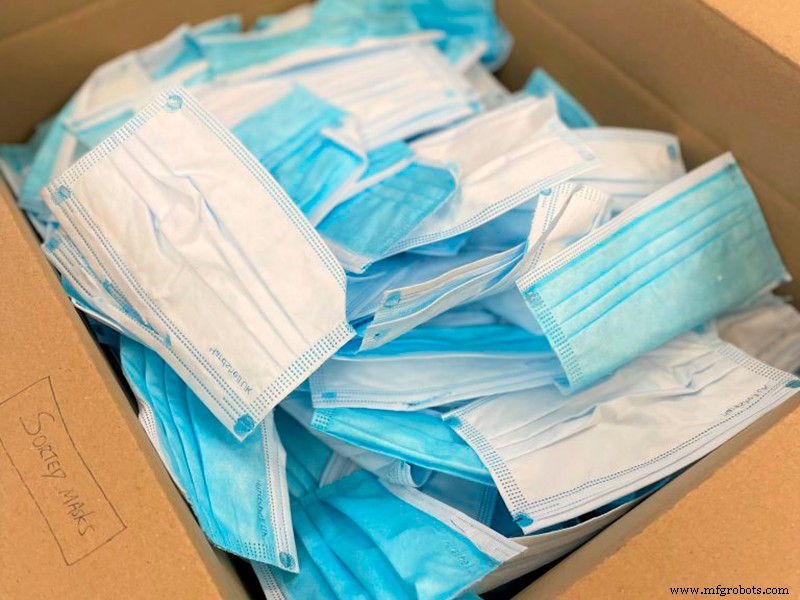
Bild 1:Für das Projekt bereitgestellte Masken. Quelle:Universität Bristol.
Der erste Schritt in diesem Prozess besteht neben dem Entfernen der Gummibänder von den Ohren und jeglicher Metallfolie, die sich möglicherweise in der Nase befindet, darin, einen Stapel Masken zwischen zwei Stücken Antihaftpapier mit einem Bügeleisen zu erhitzen.
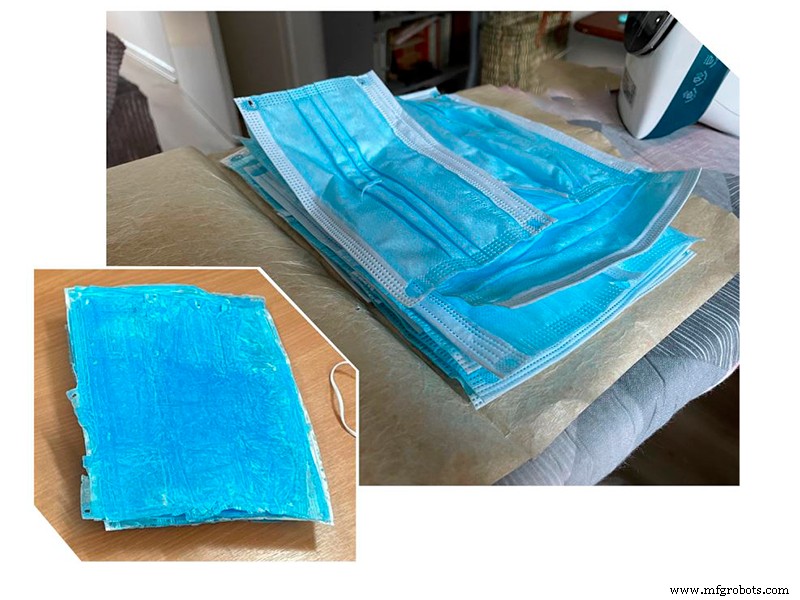
Bild 2:In Laken verwandelte Masken. Quelle:Universität Bristol.
Dadurch schmelzen sie zu einer festen Platte das ist viel einfacher zu verarbeiten und verhindert das Verstopfen der Schleifmaschine. Die resultierenden Blätter werden durch einen Mischer geleitet, um feine Pellets herzustellen aus blauem Polypropylen, die für das Extrusionsverfahren geeignet sind.
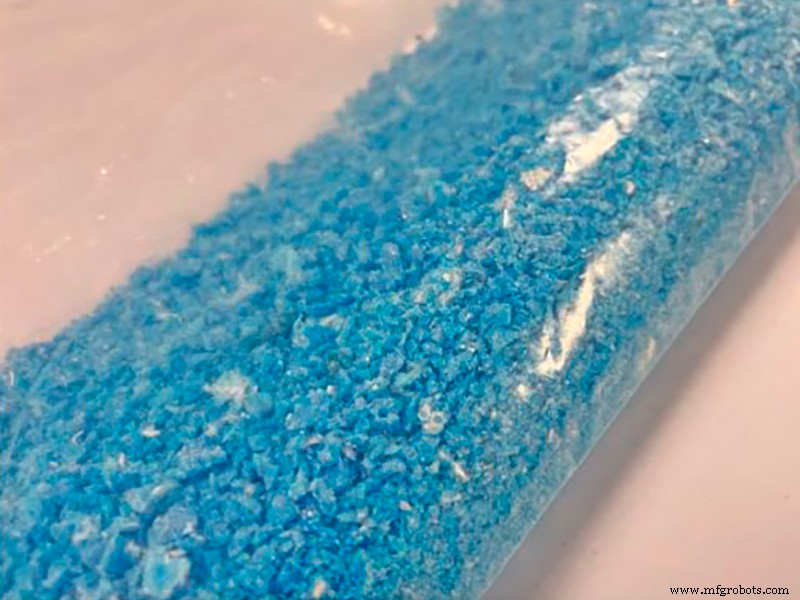
Bild 3:Resultierende Pellets. Quelle:Universität Bristol.
Before moving on to the next step, it is necessary to clarify that the masks are subjected to high temperatures which the researchers consider sufficient to kill possible COVID-19 bacteria and disinfect the material. However, the ones they used in the project had not been used previously.
In the third step, the pellets end up in the machin e (a wire drawing machine) that turns them into filaments . To convert the mask material into the filament needed for a 3D printer, the researchers used Filastruder, an open source product that is constantly evolving thanks to the community of users who share their designs and configurations.
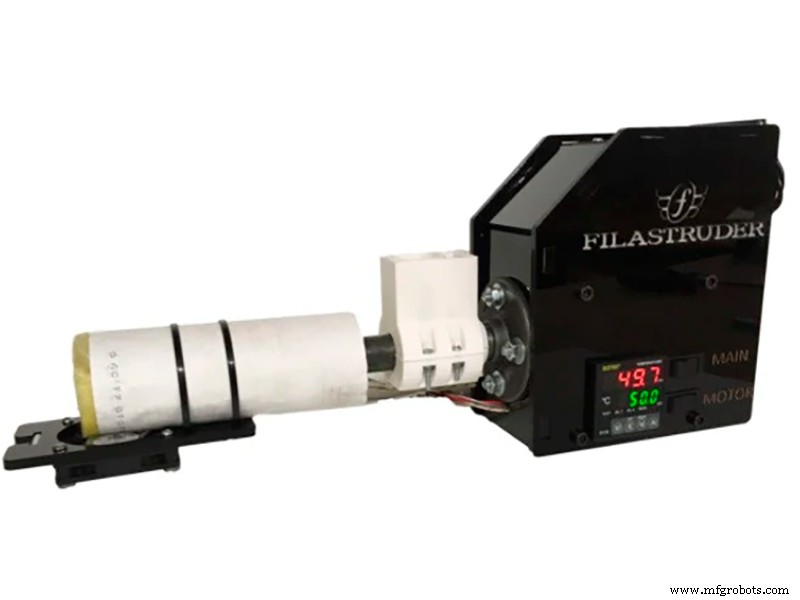
Image 4:Filastruder. Fuente:Filastruder.
The Filastruder is capable of producing filament on demand in the right colour and size for any 3D project. Its operation is simple, just set the desired extrusion temperature, wait until it is reached in the extruder, add the pellets and dyes in the chosen hopper (it can even be a plastic bottle) and turn on the gear motor to start the extrusion . To carry out the winding of the filament and facilitate its subsequent processing with a 3D printer, the ideal option is to use the Filawinder; designed especially for Filastruder users, which automatically winds the filament coming out of the drawing machine.
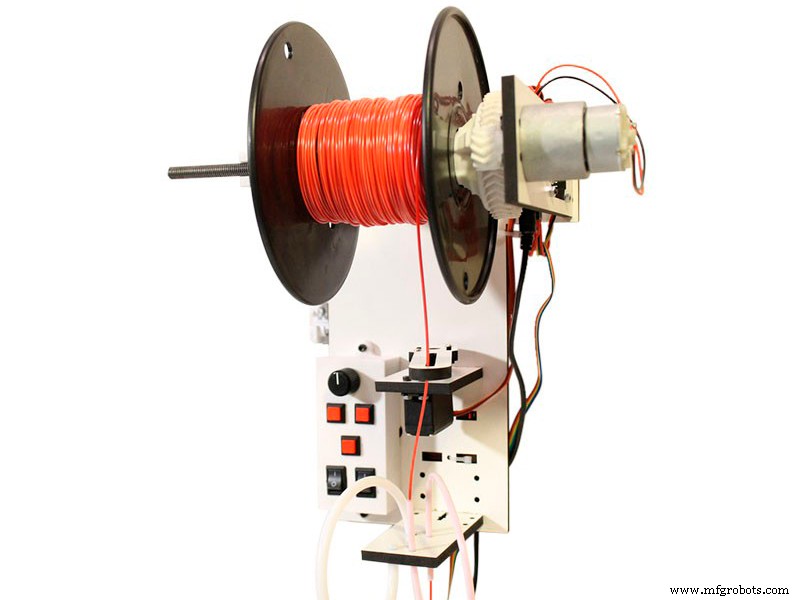
Image 5:Filawinder. Source:Filastruder.
It is advisable to place the Filastruder at a height of 1.5 m and let the filament hang down from there, so that it cools down before it touches the ground. The Filastruder should not be placed in a place where there are drafts, as these would cause the filament to oscillate and deform.
In this case, the team chose to mount the machine vertically and print a hopper to work in this position. The nozzle reached 170 °C and the pellets that passed through it were converted into filament. The team noted that in the first test the filament had only had an average diameter of 1.5 mm, but the results indicated that with further refinement it was be possible to achieve the standard 1.75 mm diameter, within a reasonable tolerance , so the nozzle was modified (drilled from 1.75 mm to 1.9 mm) and a more powerful feed mechanism was developed to get closer to the target diameter. Still, by activating the extrusion multiplier in the slicing software, the team was able to successfully print objects using the thin polypropylene filament.
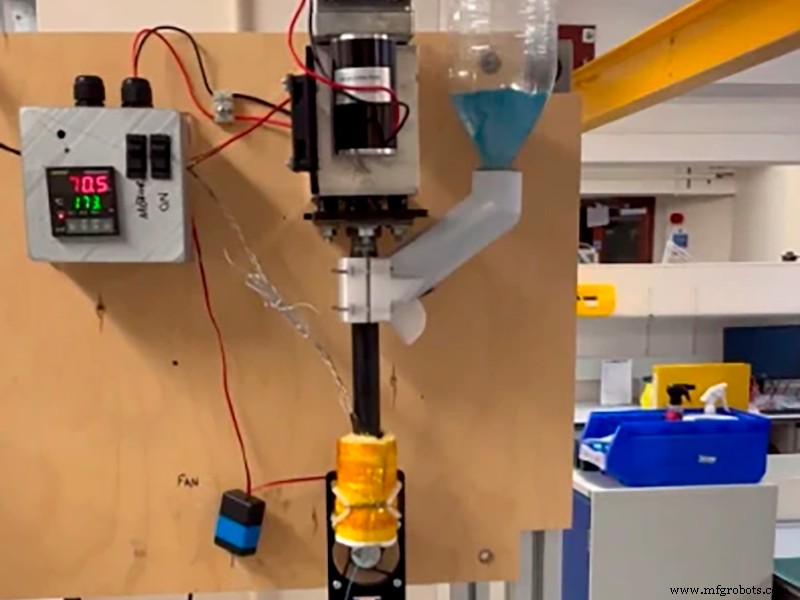
Image 6:Vertical mounting. Source:University of Bristol.
Polypropylene (PP) is notorious for being difficult to 3D print , as it does not adhere well to common printing surfaces. However, it does have good adhesion between layers. The trick employed by these scientists was to use normal transparent tape over the base, as it is often also made of PP. Using this method, it was very easy to 3D print with their limited rudimentary stock of filament on a low-cost 3D printing machine. It follows that the problems currently lie in the production of the filament and not in 3D printing with it.
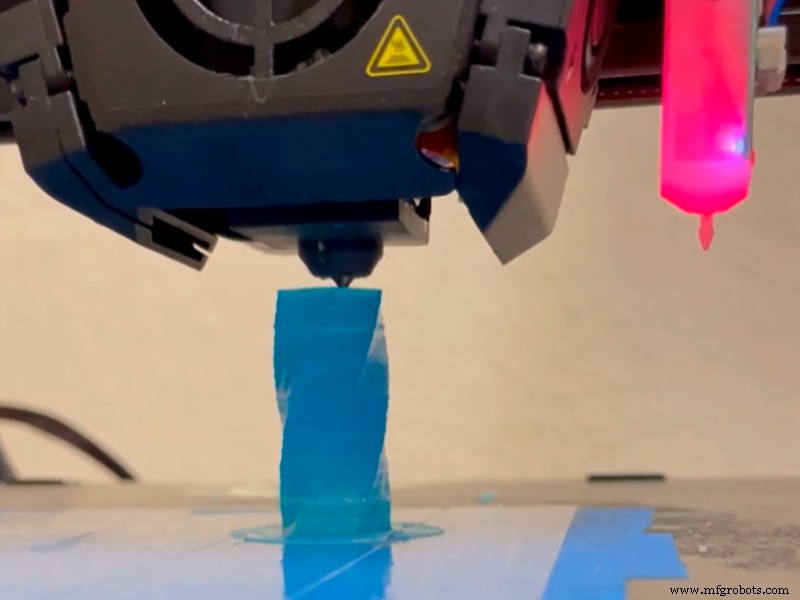
Image 7:Resulting piece. Source:University of Bristol.
The filament obtained , which is wound up, reached 7 metres in length . The piece of material that can be seen in the images provided by the University of Bristol is the result of transforming less than a third of an entire mask into filament.
Having achieved this result, the researchers are now looking at new challenges, such as the possibility of processing mixed materials by treating the mask with the handles in the same process. They also question whether the work can be automated on a large scale or whether universities would be able to create their own circular economy and oversee the distribution, collection and recycling of PPE.
Projects like the one at the University of Bristol can also be found in Spain.
For example, a group of scientists at the Universitat Politècnica de Catalunya (UPC) have devised a system for designing a mask created from used anti-covid masks . The mask has layers of recycled polypropylene fibre from discarded and properly sterilised surgical masks. A protective layer of silver oxide and cerium nanoparticles is also included, due to their antiviral and antibacterial function. The aim is to obtain a product that is protective, functional, innovative and sustainable. The recycling of used and discarded face masks begins with their autoclave sterilisation. The material is then granulated in such a way that polypropylene pellets are obtained for further processing and use to create a plastic filament which, using a 3D printer, results in a new mask. A protective coating with cerium oxide ions and silver can be applied to the printed mask, which increases its antibacterial protection. In addition to being reusable, the masks produced in this way can also be recycled into new masks, thus minimising waste generation to a minimum.
In the case of FILMA , a team made up of 4 young people, they came up with a project to recycle surgical masks that aims to give them a second life by transforming them into filament for 3D printers that can be used to create new products. Before being transformed into filament, the masks undergo a disinfection treatment. The materials are then separated and sent to a shredder that cuts them into small pieces. These pieces of plastic are mixed with some plastic pellets and finally fed into an extruder which melts the plastic, thus forming the filament. In addition to their own production of items from the filament, together with other brands, they design processes, campaigns and sustainable products to introduce the circular economy in companies and demonstrate to the new generations their commitment to the changes that are necessary for a better future.
3d Drucken
- So erstellen Sie eine CloudFormation-Vorlage mit AWS
- Schritt für Schritt:Wie erhalte ich Daten von einer SPS mit IIoT?
- Wie Sie sich auf KI mit IoT vorbereiten
- Wie das IoT die Welt um uns herum verändert
- So kehren Sie eine Zeichenfolge in Java mithilfe von Rekursion um
- Python-Durchschnitt:So finden Sie den DURCHSCHNITT einer Liste in Python
- So erstellen Sie eine Website, die Arduino mithilfe von PHP kommuniziert
- Wie man mit Arduino Nano zu Hause ein Mini-Oszilloskop herstellt
- So recyceln Sie Leiterplatten
- Wie man Inkonsistenzen bei der Verwendung von CNC-Drehmaschinen vermeidet



